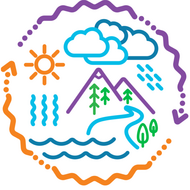Introduction to Systems
(View Complete Item Description)The development of systems and network concepts for students can begin with this highly interactive inquiry into cell phone networks. Cell phones serve as a handy knowledge base on which to develop understanding. Each cell phone represents a node, and each phone’s address book represents an edge, or the calling relationships between cell phones. Students conceptualize the entire cell phone network by drawing a graphic that depicts each cell phone in the class as a circle (node) connected by directional lines (edges) to their classmate’s cell phones in their address book. Students are queried on the shortest pathway for calling and calling pathways when selected phones are knocked out using school and classroom scenarios. Students then use a simulation followed by Cytoscape, visually graphing software, to model and interrogate the structure and properties of the class’s cell phone network. They investigate more advanced calling relationships and perturb the network (knock out cell towers) to reexamine the adjusted network’s properties. Advanced questions about roaming, cell towers and email focus on a deeper understanding of network behavior. Both the paper and software network exercises highlight numerous properties of networks and the activities of scientists with biological networks. Target Audience: This is an introductory module that we recommend teaching before each of our other modules to give students a background in systems. This module can be applied easily to any content area and works best as written for students between 6th and 12th grades but can be adapted for other ages. The lessons work best when in-person with students. If you are looking for an Introduction to Systems for remote learning, please use our Systems are Everywhere module.
Material Type: Activity/Lab, Homework/Assignment, Interactive, Lesson, Lesson Plan, Module, Simulation, Student Guide, Unit of Study





